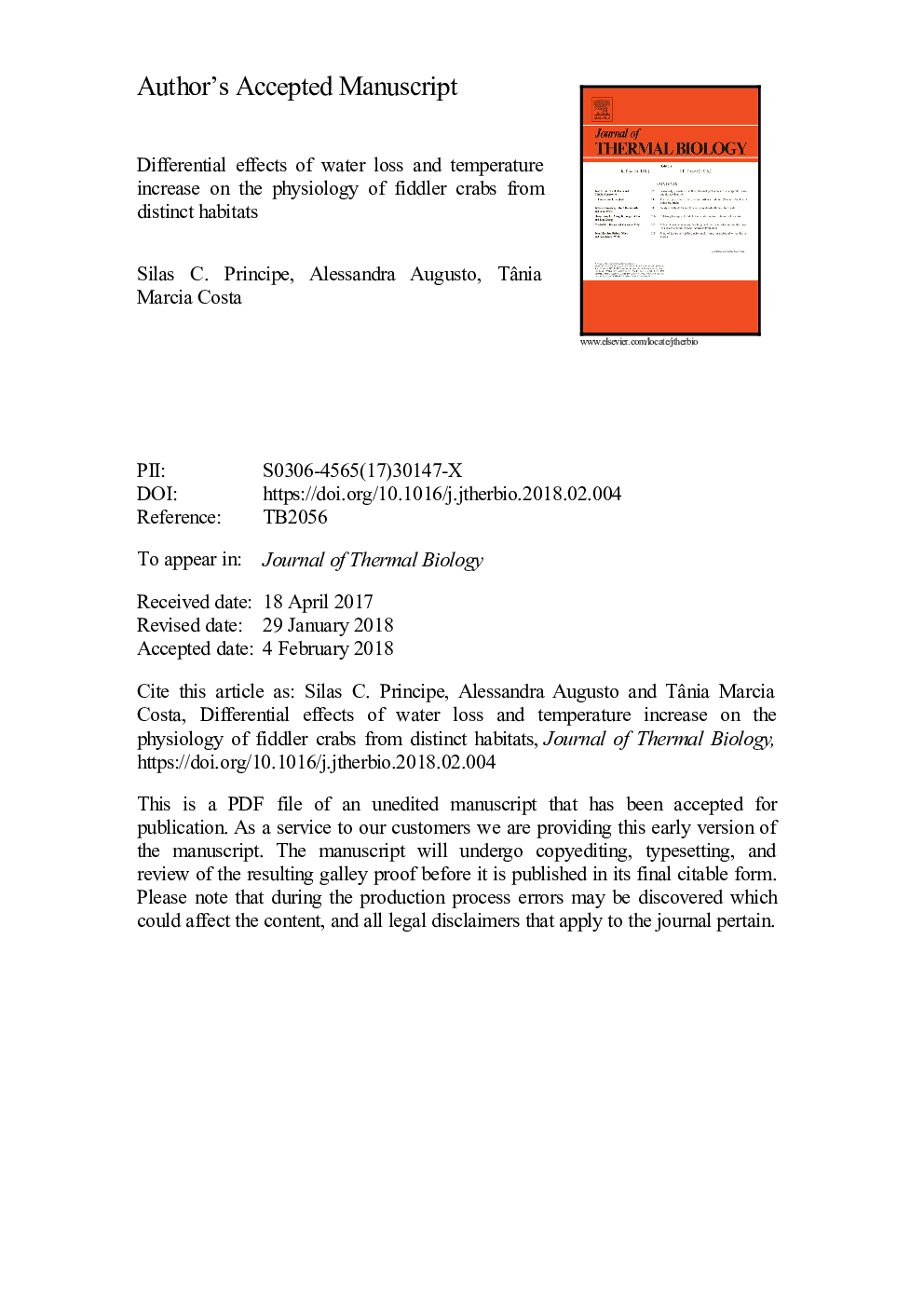| کد مقاله | کد نشریه | سال انتشار | مقاله انگلیسی | نسخه تمام متن |
|---|---|---|---|---|
| 8650075 | 1571074 | 2018 | 26 صفحه PDF | دانلود رایگان |
عنوان انگلیسی مقاله ISI
Differential effects of water loss and temperature increase on the physiology of fiddler crabs from distinct habitats
ترجمه فارسی عنوان
اثرات افتراقی از دست دادن آب و افزایش دما بر فیزیولوژی خرچنگ فندر از زیستگاه های مجزا
دانلود مقاله + سفارش ترجمه
دانلود مقاله ISI انگلیسی
رایگان برای ایرانیان
کلمات کلیدی
موضوعات مرتبط
علوم زیستی و بیوفناوری
علوم کشاورزی و بیولوژیک
علوم کشاورزی و بیولوژیک (عمومی)
چکیده انگلیسی
Temperature is one of the main environmental constraints to organism distribution, affecting physiology and survival. Organisms that inhabit the intertidal zone are exposed to temperature variation and, with climate change, they should face different conditions which include higher temperatures, leading to higher rates of water loss through evaporation and then fitness reduction or mortality. Here we tested the effects of desiccation and increased temperature in two fiddler crabs species that occupy distinct habitats in regard to vegetation cover and position on the intertidal zone and thus may respond differently to these stressors. Leptuca thayeri, which is restricted to the mid-tide zone and vegetated areas, had higher desiccation and mortality rates than Minuca rapax, a generalist species, when exposed to desiccation for 120â¯min. Also, compared to M. rapax, L. thayeri had a more permeable carapace. Temperature elevation of 10â¯Â°C and 20â¯Â°C for 72â¯h caused no mortality in either species. However, there were changes in hemolymph osmolality and muscle hydration in both species. Leptuca thayeri osmolality was low in the intermediate temperature, suggesting that at this temperature this species has a better salt secretion capability. Minuca rapax, however, had an increase in hemolymph osmolality at the highest temperatures with no LDH increase, which indicates that osmotic control in this species is more sensitive to temperature increase. Our results show that L. thayeri suffers more from desiccation, due to a more permeable carapace. However, because of this higher permeability L. thayeri is capable of lowering its temperature more than M. rapax. As temperature elevation produces great physiological changes in M. rapax, a reduced ability to keep a low temperature can be an issue for this species if temperature increases. However, higher water loss to keep body temperature low may decrease L. thayeri survivability in the same scenario.
ناشر
Database: Elsevier - ScienceDirect (ساینس دایرکت)
Journal: Journal of Thermal Biology - Volume 73, April 2018, Pages 14-23
Journal: Journal of Thermal Biology - Volume 73, April 2018, Pages 14-23
نویسندگان
Silas C. Principe, Alessandra Augusto, Tânia Marcia Costa,
